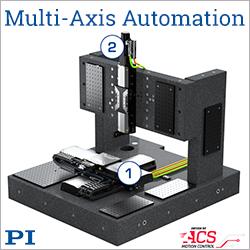Underwater Robotics Competition Challenges Students to Tackle Ocean and Space Science and Exploration
NASAs Neutral Buoyancy Lab to host MATE student underwater robot competition June 23-25.
At 202 feet long, 102 feet wide, 40 feet deep, and a capacity of 6.2 million gallons, NASAs Neutral Buoyancy Lab (NBL) is the worlds largest indoor pool. Its normally used to train astronauts for spacewalks and other extra-vehicular space tasks, but from June 23-25, the NBL will host hundreds of students competing in the Marine Advanced Technology Education (MATE) Centers annual international student underwater robotics competition.
MATE encourages students to learn and apply science, technology, engineering, and math (STEM) skills as they develop ROVs to complete realistic missions that simulate real-world problems. The contests entrepreneurial focus tasks students with forming companies to design a dual-purpose, single-launch ROV that can operate in the harsh deep ocean and outer space environments.
For example, in the ocean-themed missions, students will use their ROVs to turn a decommissioned oil rig into an artificial reef and collect oil samples and coral specimens. The space-based missions challenge students to pilot their ROVs under the ice sheet of Jupiters moon Europa to collect data and deploy instrumentation.
Middle school, high school, home school, community college, and university students vie for top competition honors in two classes, depending on the complexity of their vehicle design and the difficulty of the underwater mission tasks. This years competition will host a record number of teams - 70 - from all over the world.
In addition to the underwater missions, teams must submit technical documentation and make presentations to a panel of judges who represent various aspects of the ocean or space industry. Each team is evaluated on the design, construction, and performance of its ROV; its members ability to communicate what they learned; and how they put their knowledge to use in designing and building their ROV.
Before the June event, teams from across the world participated in 26 regional contests that feed into the international event. Organized by MATE and the Marine Technology Societys (MTS) ROV Committee, the ROV competition is supported by the MTS ROV Committee, National Science Foundation, NASA, NOAA, and other ocean- and space-related organizations.
For more information about the MATE ROV competition, or to view it streamed live on the Internet, please visit http://www.marinetech.org.
Featured Product

PI USA - Gantry Stages for Laser Machining and Additive Manufacturing
High performance gantry systems, from PI, are used in precision assembly, laser machining, and additive manufacturing. Complete with software and state-of-the-art EtherCat® motion controllers. Easy to program, easy synchronization with lasers and dispensers. Standard and custom, compact systems and large, granite-based units.
